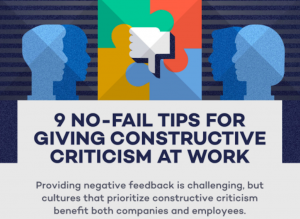Editor’s Note: This is a guest post by Mark Feldman – CTO at Findmyshift.com – His opinions are his own.
In the information era, nearly every business process has been disrupted by technology that makes your job easier. Whether or not you’re leveraging the most up-to-date systems is neither here nor there. The point is, virtually everything you do manually has an automated alternative.
Recruitment and staff management go hand-in-hand. Over the last decade, as with most other industries, employee scheduling has advanced to the point where you can now point and click to add someone to a specific shift.
Let’s take a look at how far we’ve really come.
Before information technology found its way into the workplace, every aspect of staff scheduling was done by hand: shift organization, staff communication, time clock administration, payroll, and overtime rates. A business manager was required to find out when someone needed to work, who would come in during specific shifts, and how much would be paid. This type of work required a high level of critical thinking, an overall understanding of the “big picture,” and a desire to choose the best scheduling system for the benefit of the company.
What’s most baffling, when you understand the benefits of current IT capabilities, is that some companies still use a system like this. The first “punch card” was leveraged for employee time tracking in 1725, and many businesses haven’t moved beyond the technology. They take a completely hands-on approach. It may even seem more “genuine” to run your business like this. Once you know what’s possible and the benefits of utilizing state-of-the art scheduling platforms, your opinions will change.
Automation and modern technology provide avenues for companies to ultimately increase their ROI. Here’s how automation has evolved since the first scheduling algorithm was invented.
The World’s First Scheduling Algorithm
In 1956, the Critical Path Method (CPM) was invented to solve the time-cost conundrum at DuPont. This was the first time anyone had successfully created a system for optimizing the sequence for scheduled activities in order to meet a goal. This was a joint venture between DuPont, a chemical company, and Remington Rand Univac, a computer firm.
CPM provides a graph that represents a project and predicts completion time based on multiple factors. In a nutshell, the CPM breaks a project down into sections with estimated durations (based on workers, available working hours, and other factors) and combines them to predict the amount of time the entire project will take.
This algorithm can be executed manually or automated through technology. The fundamental parts of the original algorithm are still applied to many modern software systems. A CPM schedule serves several functions:
- Identify the tasks that must be performed to complete a project;
- Plan the activity sequence for these tasks;
- Create a network of the tasks;
- Estimate the duration of each task
- Determine the “critical path” for completion; and
- Set a reasonable deadline.
The Theory of Constraints
In 1984, the theory of constraints (TOC) was introduced by Eliyahu Goldratt in an attempt to illustrate the fact that CPM-manageable systems are limited through various constraints. TOC looks at non-critical tasks, unexpected issues with tools, and policies that can potentially increase the duration of a project. By looking at the maximum time that could be spent sending emails, for example, a more realistic deadline can be set; this theory enhances the prediction capabilities of CPM.
Modern Tools to Optimize Scheduling & Project Management
Since we’re living in an era when you don’t need to do all the heavy lifting alone, leverage the right tools. These tools will help you streamline your management responsibilities.
- Communication – Slack: If you check your email all day, you’re not going to get anything done. All of the employee productivity advice I’ve read says that you should check your email only one to three times per day. But, on average, employees spend 13 hours checking email each week; this time could be better spent on actual work. Slack provides a solution.
- Project Management – Trello: Especially if you’re working with a remote team, Trello makes project management easier, giving you a sense of how much time might be spent on internal tasks and campaigns. Organize boards and lists in one place where everyone can see them.
- Integrations – Zapier: One of the greatest inventions in the realm of online tools is Zapier because it can help you connect nearly any two tools online. So, if you are working in one platform and want to streamline processes between other tools, this is a great place to begin. They can actually link our scheduling software with over 100 other online tools.
Conclusion
Whether you’re launching a new company or leading an established business, it’s best to handle your scheduling with the most state-of-the art tools; they provide quicker and more convenient shift-management, freeing up your time for other tasks.
What are your favorite modern shift management tools? Please share in the comments below.





